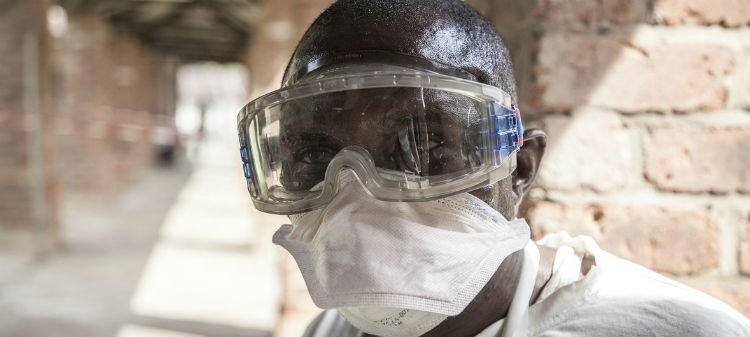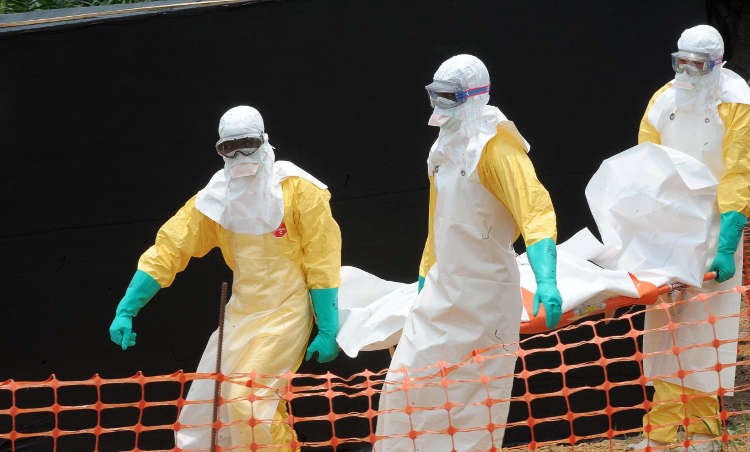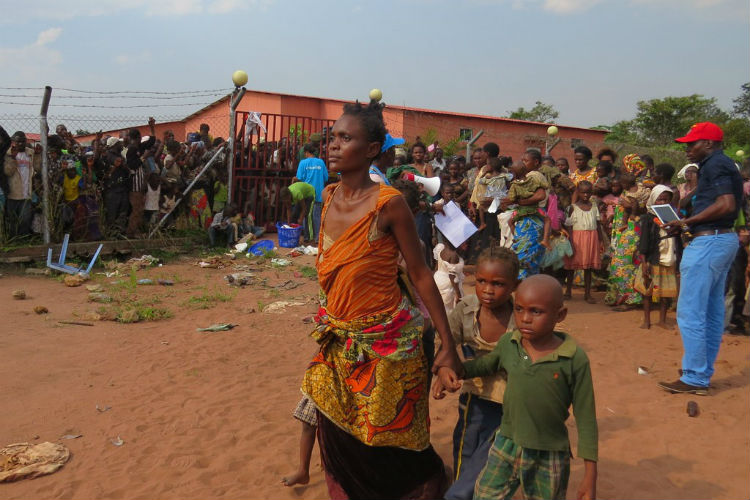The Ebola Virus: Do We Care Enough?
Since its emergence in 1976, the Ebola Virus has caused thousands of deaths across Africa. The highly infectious nature of the virus has led to political instability and slowed economic growth in affected regions. However, for most of us in Ireland and the rest of the developed world, our knowledge of the disease will more than likely be centred on the 2014 outbreak which saw a number of infected people returning to parts of Europe and America. It’s difficult for us to become emotionally invested in a disease which we believe will probably never reach our shores. But with global travel and the growing importance of the African continent economically, this may not always be the case. Currently there is an outbreak of the Ebola virus in the Democratic Republic of Congo (DR Congo). This outbreak has received very little coverage in the western media, and that raises the question: Do we care enough about the Ebola Virus?
Current World Health Organization (WHO) Status
On 1st August 2018 the Ministry of Health of the DR Congo declared a new outbreak of the Ebola virus disease. Since then 129 cases have been reported, of which 86 have resulted in death. Compared to the 2014 West African Epidemic which killed 11,308 people across Guinea, Liberia and Sierra Leone, the current numbers are small. However, authorities are extremely worried that the virus may spread into neighbouring countries. To fully appreciate why those on the ground in DR Congo are so concerned about the potential risk of the current outbreak, it is necessary to understand the history of the virus which led to the 2014 outbreak.

First Recorded Case of the Ebola Virus
The Ebola virus was first discovered in 1976 when two consecutive outbreaks occurred in Central Africa. The first of these two outbreaks occurred in the DR Congo (formerly Zaire) in a village near the Ebola River, with the second outbreak occurring in South Sudan approximately 850 km away. Scientists would soon discover that these two outbreaks were in fact caused by two different strains of the virus, Zaire ebolavirus and Sudan ebolavirus.
How Does The Disease Affect Us?
The virus causes a haemorrhagic illness which unfortunately has a fatality rate of approximately 50%, although some outbreaks have resulted in fatality rates as high as 90%. The first wave of symptoms appear within two days and three weeks of exposure, and include fever, headaches, muscular pain and sore throat. The second wave of symptoms can include diarrhoea and vomiting, as well as a rash. Patients can recover from these symptoms but if they do progress to the next stage which results in both internal and external bleeding, the disease is often fatal. What exacerbates the situation is the highly contagious nature of the disease. Ebola spreads through human-to-human transmission when someone (broken skin or mucous membrane) comes into contact with the blood, organs, secretions or other bodily fluids from infected people, or with surfaces contaminated with these fluids.

History Of Ebola
Since 1976 there have been many Ebola outbreaks with most occurring in African countries. However, there have been some isolated cases reported in other parts of the world. For example, two separate Russian scientists died in different incidents while working on a vaccine for Ebola. As the years passed scientists discovered that there were in fact five strains of the virus with four causing illness in humans. From 1976 to 1994, the virus had been isolated to outbreaks in the DR Congo and Sudan. However, in 1994 a scientist became ill when working on a wild chimpanzee in the Ivory Coast. Diagnostic testing indicated that the scientist had contracted a new strain from chimpanzees in the Tai Forest. He was treated and recovered, with the strain becoming known as Tai Forest ebolavirus. In the same year Gabon had its first outbreak, and then in 2000 Uganda also experienced an outbreak with a mortality rate of greater than 50%. Outbreaks continued across DR Congo, Gabon, Sudan and Uganda over the next 14 years. But on 23rd March 2014 everything changed.
What Happened In 2014?
From the time of its emergence in 1976 up to that day in March 2014 an estimated total of 1590 had died from the virus. The 2014 outbreak would spread at a rate never seen before and cause unprecedented death. Within two months the disease had spread from Guinea, onto Liberia and Sierra Leone, becoming known as the West African Epidemic. Additional outbreaks occurred in Mali, Nigeria and Senegal when people carrying the infection returned from the epidemic region. The impact of these additional outbreaks were limited due to early intervention. However, by the time the WHO had managed to stop the spread of Ebola within West Africa and declare the emergency over, two years had passed and 11,000 people had died.
[perfectpullquote align=”full” bordertop=”false” cite=”” link=”” color=”#2FB3C9″ class=”” size=””]Suggested Reading: Beatriz Kimpa Vita – a charismatic preacher in the Kingdom of Kongo with a radical doctrine; that Mary and Jesus had been been black Kongolese Africans.[/perfectpullquote]
How Did The World Respond To The 2014 West African Epidemic?
The WHO and the international community reacted, but many believe at a pace which was too slow. An independent panel of global experts would later conclude that the inadequate response resulted in “needless suffering and death”. The Panel’s report was published in The Lancet and went as far as to say that “the reputation and credibility of the WHO has suffered a particularly fierce blow“. Other groups on the ground echoed the findings of the expert panel, with Medicine Sans Frontiers (MSF) claiming that thousands of lives could have been saved had the correct action been taken in time. However, on the 8th August 2014 the WHO did declare the outbreak an international public health emergency. They followed this up with an action plan to help guide and coordinate the international response to the outbreak, with the aim of stopping the worldwide spread within 6-9 months.
In September 2014, the United Nations (UN) Security Council declared the Ebola virus outbreak “a threat to international peace and security”. The UN Security Council resolution 2177 was passed and urged all member states to provide more resources to fight the outbreak. This would be the first time that the Security Council passed a resolution to deal with a public health crisis. On 26th March 2016, as a result of the coordinated effort the WHO declared the outbreak no longer an emergency.
What Is Happening Right Now?
Since the peak of the 2014 West African Epidemic, we in the west have been exposed to very little media coverage about the virus. In 2017, 8 people in DR Congo were diagnosed with Ebola and 4 of these cases would become fatal. Fortunately, lessons had been learned from the slow response to the 2014 outbreak and international agencies acted immediately. This brought an end to the outbreak within 3 months. However, when the 10th Ebola Virus outbreak was declared in North Kivu province of DR Congo in May of this year, health agencies faced a new challenge. This would be the first time that an outbreak had occurred in a military conflict zone.

The security situation has been continuously deteriorating in this region over the past year. In December 2017 rebel forces attacked UN peace keepers killing 15 soldiers and wounding more than 50 others. This conflict has lead to thousands of people being forced to flee the region, many crossing the border into Uganda. All of these issues is making it very difficult for health agencies to reach zones where there are active cases of Ebola. The conflict also makes it dangerous for community members to travel to health centres for treatment. To date the 10th Ebola outbreak to strike DR Congo has killed 86 of the 129 cases. If these numbers continue to rise, the authorities will be faced with the task of escorting health teams to regions which have proved unsafe even for the UN soldiers?
Closing Thoughts
There is no doubt that huge lessons were learned from the slow response to the 2014 West African Epidemic. However, many people believe that it was only when reports of the Ebola virus reaching the United States and Europe began to break, that the authorities acted. Research and development of vaccines were fast-tracked and large amounts of money and man power were invested in an attempt to contain the virus within Africa. The steps taken were successful, but the authorities now face a challenge like never before. Thousands of people have been displaced from their homes due to ethnic conflicts and are fleeing to anyplace which offers safety. As they cross the border out of DR Congo, there is a real risk that this outbreak could spread into other countries.
To date it would seem that despite the challenges facing the authorities, the action they have taken is beginning to slow the spread of the virus. It is too soon to say what will happen over the next few months in the affected regions, but what is for certain is that were the virus to spread out of Africa, it has the potential to destabilise the global economy and test the political bonds which keep the majority of the world at peace. Let’s hope that this time we do care enough.
